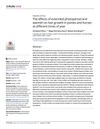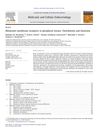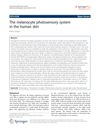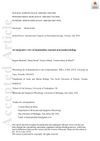Effects of Maintaining Solstice Light and Temperature on Reproductive Activity, Coat Growth, Plasma Prolactin, and Melatonin in Goats
May 1999
in “
Reproduction
”
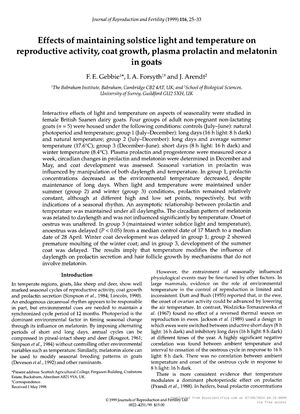
TLDR Goat reproductive activity and coat growth are affected by light and temperature, with temperature altering prolactin levels and hair growth, but not melatonin or estrus onset.
In a study conducted on 20 female British Saanen dairy goats, researchers investigated the effects of light and temperature on reproductive activity, coat growth, and plasma levels of prolactin and melatonin. The goats were divided into four groups and exposed to different conditions of photoperiod and temperature. The study found that seasonal variation in prolactin was affected by both daylength and temperature. Specifically, prolactin levels decreased with lower environmental temperatures even under long day conditions (group 1), and remained relatively constant under simulated summer (group 2) and winter (group 3) conditions, suggesting an asymptotic relationship between prolactin and temperature. Melatonin's circadian pattern was influenced by daylength but not significantly by temperature. The onset of estrus was not affected, but the transition to anoestrus was delayed in the group exposed to winter conditions (group 3). Additionally, coat development was influenced by the experimental conditions, with delays in winter coat development, premature moulting, and delayed summer coat development observed in groups 1, 2, and 3, respectively. These results indicate that temperature can modify the effects of daylength on prolactin secretion and hair follicle growth without involving melatonin.
